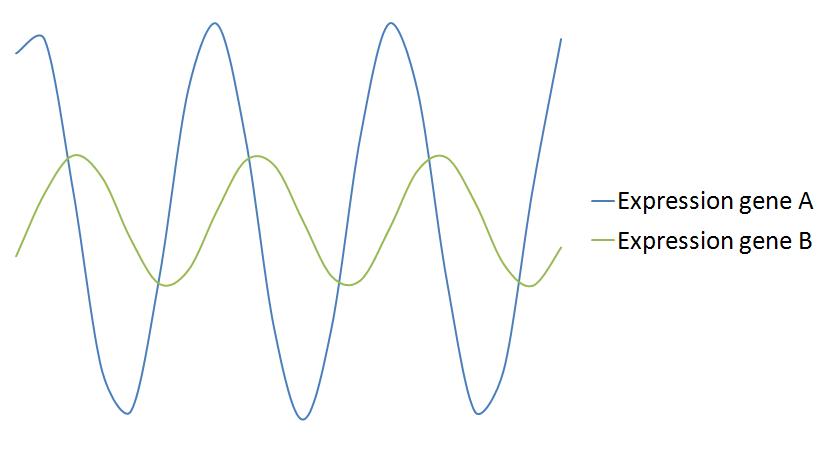Team:Wageningen UR/Project/Applications
From 2011.igem.org
(→Synchroscillator: Possible Applications) |
(→Synchroscillator: Possible Applications) |
||
| Line 26: | Line 26: | ||
Looking at a colony of bacteria under the microscope expressing fluorescent proteins in an oscillating manner sounds like fun, but the oscillating system might have real applications. One hypothetical application that could be used in fundamental research involves interactions between genes. To become familiar with this hypothetical application, an example is given: | Looking at a colony of bacteria under the microscope expressing fluorescent proteins in an oscillating manner sounds like fun, but the oscillating system might have real applications. One hypothetical application that could be used in fundamental research involves interactions between genes. To become familiar with this hypothetical application, an example is given: | ||
| - | Say, there exists a particular gene A, which might interact with other genes B, C & D, but there is no evidence for this. To get an idea about this interactive behaviour, gene A can be knocked out. Now that gene A is knocked out it is desirable to find out what happened with genes B, C & D. One way is looking at the transcriptional level of those genes, to see whether there are differences compared to the normal situation. Another is measuring the concentrations of the proteins that are expressed by gene B, C & D. By looking at those data, conclusions can be drawn. For example, gene B seems to be | + | Say, there exists a particular gene A, which might interact with other genes B, C & D, but there is no evidence for this. To get an idea about this interactive behaviour, gene A can be knocked out. Now that gene A is knocked out it is desirable to find out what happened with genes B, C & D. One way is looking at the transcriptional level of those genes, to see whether there are differences compared to the normal situation. Another is measuring the concentrations of the proteins that are expressed by gene B, C & D. By looking at those data, conclusions can be drawn. For example, gene B seems to be upregulated, gene C seems to be downregulated and nothing happened to gene D. Now it seems that gene A interacts with both genes B & C, but there is still no hard evidence for that, as there is a dozen of other factors that could have influenced the expression of genes B & C. Think of growth conditions, growth phase, other gene interactions, etc. |
Using the oscillating system, it is possible to have gene A oscillating and at the same time look at what happens to the other genes B, C & D through time. If it appears that gene B shows changes in its expression level pattern or protein concentration pattern and genes C & D do not show a difference compared to the normal situation whilst gene A is oscillating, it means that there is hard evidence for the fact that gene A is interacting with gene B and not with gene C & D. | Using the oscillating system, it is possible to have gene A oscillating and at the same time look at what happens to the other genes B, C & D through time. If it appears that gene B shows changes in its expression level pattern or protein concentration pattern and genes C & D do not show a difference compared to the normal situation whilst gene A is oscillating, it means that there is hard evidence for the fact that gene A is interacting with gene B and not with gene C & D. | ||
Revision as of 03:02, 22 September 2011
 "
"



